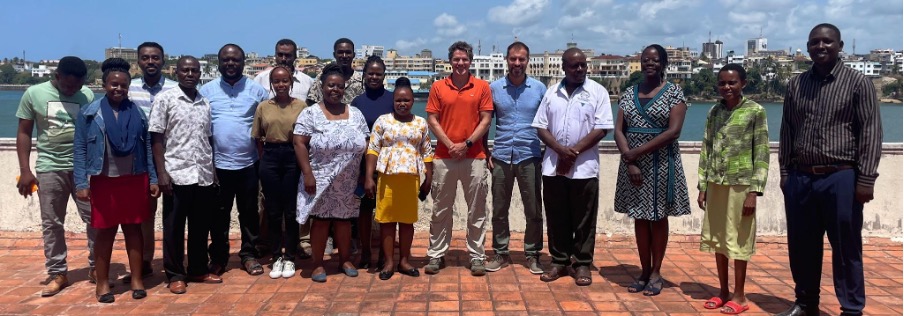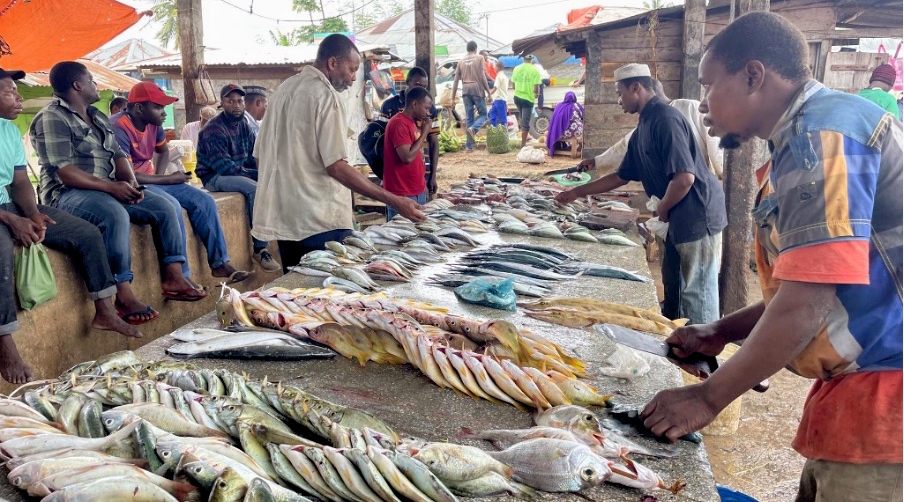Last week I stood in front of 250 fishers, fisheries officers, managers, and NGOs at a beach hotel in Mombasa, Kenya. I was there to introduce a new project that aims to harmonise fisheries data in East Africa and transform it into knowledge for sustainable fisheries and improved livelihoods.
But I wasn’t there to give them technology and tell them how to use it - because that rarely (never?) works. I was there to tell them that we will build it together, and that this huge collaborative meeting of different fisheries stakeholders, was the best possible start I could imagine. Because, they were already all in the same room, sharing ideas, concerns, passions, worries with one another, while they listened to research findings from the last few years from project partner WCS. They were keen to hear what the data showed.
In 2016, I moved to the young nation of Timor-Leste (East Timor) as a postdoc with my wife and one year old son. I was working on a project aimed at using fisheries to solve some of Timor-Leste’s most chronic problems of malnutrition and poverty. At that time however, we had no idea of the potential, or anything else about the fisheries: There was no data. So, we started to work with the government to develop a cheap and adaptable system that collected, analysed and displayed fisheries catch and effort information in near-real time.
Seven years on, that system, ‘Peskas’ , has been adopted as the national monitoring system of Timor-Leste by the government. And while regulatory policy changes have been slow to come due to bigger governance issues, Peskas has brought about new media attention and government investment in the fisheries sector, where previously it was mostly ignored and under-funded.
Unfortunately, this treatment is not unusual. Small-scale fishers are often excluded or ignored in decisions made about who benefits from ocean space and resources (the “blue economy”). This is because their activities are informal, so mostly invisible. However, collecting data on their activities goes towards solving this. In a landmark case in Taiwan in 2016, the grounding of a large container ship in important local fishing grounds led to legal action. As is often the case, the big corporation would likely have had this case dismissed based on lack of evidence - but as luck would have it, the fishers were participating in a research trial that tracked their movements and catches. Hence, they were able to show the value of their activities in that area and hold out for substantially more reparations.
Small-scale fishers around the world face similar threats to their livelihoods, but have little evidence of their activities or their value. However, collecting this data gives them information and knowledge on which to base business decisions, or access credit for example.

This meeting in Mombasa was the start of the Digital Coasts work package of the Asia-Africa Blue Tech Superhighway project funded by the UK government’s Blue Planet Fund. Over the next four years, this project aims to enable data-driven management of small-scale fisheries in East Africa. To do this, WorldFish will work with local and international partners, from ministries to fishing communities, to identify existing data streams and to create new ones to feed an information system on which sound and sustainable management decisions can be based. It’s exciting and humbling to consider that large coastal states like Kenya, Tanzania and Mozambique might be using approaches developed in the small nation of Timor-Leste.
In Zanzibar, the government agency responsible for fisheries is the Ministry of Blue Economy and Fisheries (MBEF). Both MBEF, and their research partner ZAFIRI (Zanzibar Marine and Fisheries Resources Research Institute) will be key to building a sustainable solution to fisheries management in Zanzibar. We will work in Unguja and Pemba islands to integrate digital, near-real time monitoring, and design analytics elements according to their needs and the context. The first challenge will be the enormous diversity of fisheries and species in East Africa. Timor-Leste fisheries are nearshore and mostly focused on thin, fringing reefs, but just a walk through the market in Unguja’s Stone Town will bring you face to face with tunas, sharks, black marlin, snappers, groupers, octopus and much more.
Similarly, in Kenya the work will focus on enhancing data collection methods at the level of Beach Management Units. These are not part of the government, but are legally recognised bodies in the Fisheries act that govern the coastal fisheries of an area. They are responsible for collecting and submitting fisheries data and developing a management plan.

As my plane was leaving Zanzibar bound for our headquarters in Malaysia, I couldn’t help but feel excited to start. East Africa has the technological and social conditions to allow for much faster uptake of digital fisheries than Timor-Leste. Combined with so many collaborating institutions eager to contribute time and data, it makes me optimistic for a small-scale fisheries digital revolution in the region.
